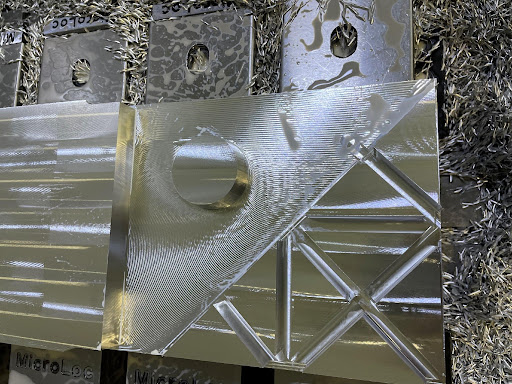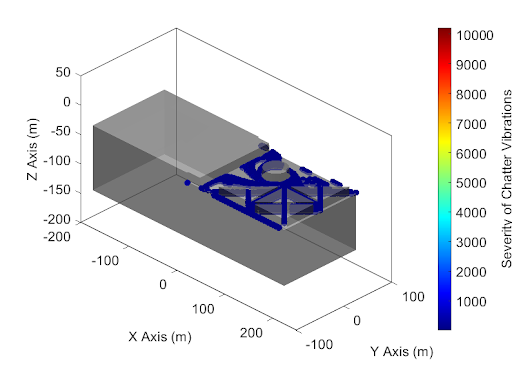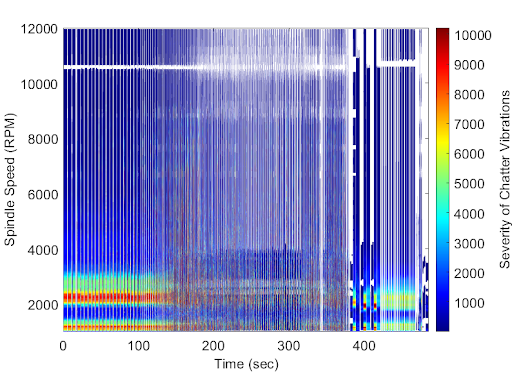Feed Rate and Spindle Speed Optimization for NMIS
Challenge
National Manufacturing Institute Scotland (NMIS) serves as a leading High Value Manufaturing Catapult Centre, specializing in manufacturing excellence. They support SMES and they wanted to run an SME Engagement day to demonstrate state of the art technologies SMEs can benefit from.

Approach
Productive Machines optimised a Siemens NX CAM file by simulating millions of machine setting combinations in their algorithms. Utilising their unique digital twin technology, they systematically analysed and adjusted feedrates and spindle speeds across the toolpath. This approach allowed for comprehensive optimization without the need for repetitive physical trials. NMIS cut the part with the recommended setting identified by Productive Machines.
Methodology:
NMIS created a Siemens NX CAM file for the given design using a state of the art tool path, named adaptive milling. Adaptive milling is NX CAM's advanced tool path solution that aims to keep consistent loading on milling tools. Productive Machines's software was used to identify the best spindle speed for the tool path using its unique stability map solution.
Stability solution of Productive Machines served two functions. First function was diagnosis. The second function is the optimisation.
In addition to chatter optimisation and adaptive tool path solution of NX CAM, Productive Machines applied the feed rate scheduling solution on the tool path. This resulted in an additional 9% saving on the cycle time.

Results
Cycle Time Reduction: In addition to the increase in spindle speed with the stability map solution, feed rate scheduling solution process resulted in a significant 9% reduction in cycle time. This efficiency improvement directly translates into enhanced productivity and reduced manufacturing costs.
Chatter Vibration Mitigation: Without Productive Machines' solution, 8000 rpm would be used in the process which would result in chatter vibrations according to the stability map. With the diagnosis tool, the locations where the chatter vibrations would occur at 8000 rpm were visualized. In order to mitigate these issues, 10600rpm was identified as the optimum spindle speed for the process.
Right-First-Time Manufacture: The utilization of digital tools allowed for a right-first-time manufacturing approach. By avoiding trial-and-error methods on the the machine tool, resources were conserved, and production efficiency was maximized.


Conclusion
The collaborative work between NMIS and Productive Machines exemplifies the power of innovation in manufacturing process optimization. Through the use of Siemens NX CAM and SenseNC Finesse technology, significant improvements in cycle time reduction and chatter vibration avoidance were achieved. This case study underscores the importance of embracing advanced digital tools to enhance manufacturing efficiency. minimise costs, and ensure high-quality product outcomes.
